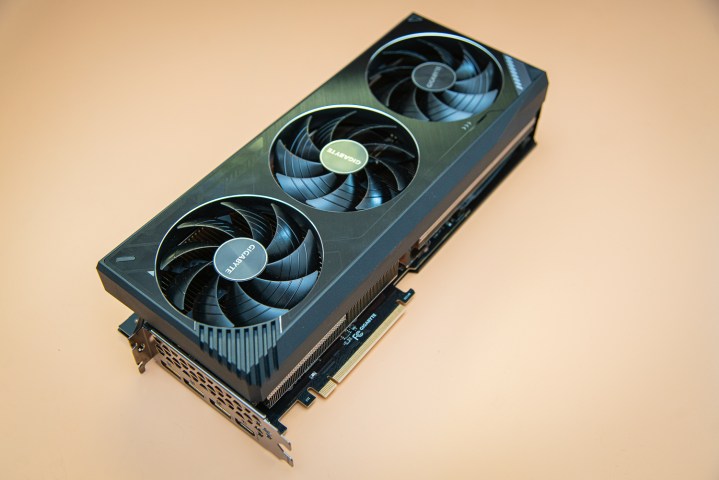
Buying a new GPU in this generation is a bit of a tricky minefield of graphics cards to steer clear of. Sometimes, the performance is there, but the value is not; other times, you could get something much more capable for the same amount of money.
While Nvidia makes some of the best GPUs, it’s certainly no stranger to that performance vs. value dilemma. Below, I’ll show you three Nvidia graphics cards you’re better off avoiding right now and tell you their much better alternatives.
RTX 4060 Ti
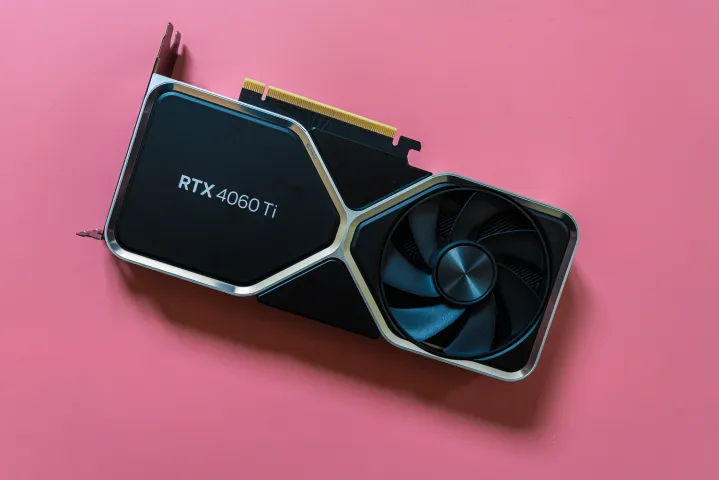
Nvidia’s RTX 4060 Ti was never in any danger of making anyone’s list of the best GPUs of all time. From the moment it launched, it was fairly controversial, playing right into the ongoing concerns related to the amount of VRAM required in AAA games.
The problem with the RTX 4060 Ti lies not just in its low memory capacity for the price range but also in its narrow memory bus. At 128-bit, it’s half the size of the one in the RTX 3060 Ti, and the card also sports fewer CUDA cores. All of that would’ve been fine if not for the fact that the RTX 4060 Ti is still pretty expensive, and it just doesn’t offer the performance you’d expect from a card that costs nearly $400. Let’s explore this in a little bit more detail.
Firstly, it’s important to note that the RTX 4060 Ti is faster than the RTX 4060, and by a decent margin of around 20% in some titles. However, there are two reasons why that 20% doesn’t mean as much as it maybe should: The prices and the existence of DLSS 3.
For the pricing, this is pretty straightforward. At the time of writing, you can score the , but you’ll have to pay at least for the RTX 4060 Ti 8GB. The 16GB version bumps the price up to , at which point it might as well have a giant “avoid” written all over it in capital letters.
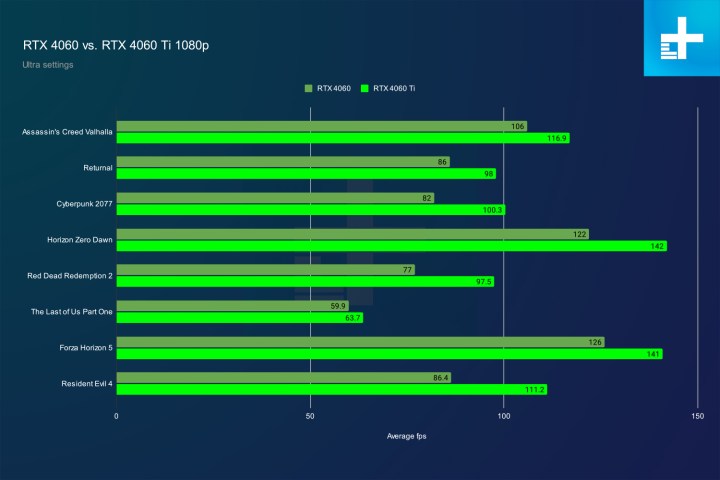
If not for DLSS 3, spending an extra $100 for 20% more performance would’ve been more justifiable. However, with the addition of Nvidia’s upscaling tech, you simply don’t need it. The RTX 4060 has enough juice to run the majority of current AAA titles without a hitch when DLSS 3 is enabled, as does the RTX 4060 Ti. You might as well get the RTX 4060 and put that extra $100 toward a better CPU or virtually any other component, or expand your GPU budget to get something leagues better.
The RTX 4060 Ti is also unimpressive for a number of other reasons; for starters, it barely manages to trade blows against its last-gen predecessor, the RTX 3060 Ti. In some of our tests, the RTX 3060 Ti actually pulled ahead, such as in Hogwarts Legacy without ray tracing, where the Ampere card led by a few frames per second (fps), hitting 112 fps, whereas the RTX 4060 Ti could only manage 110 fps. It’s not a good look for the 40-series card, and its only saving grace is DLSS 3.
You’d think the 16GB version of the 4060 Ti would be better, but no — not really. It still suffers from the same narrow memory bus that stifles its bandwidth and, consequently, its performance. Buying one of those GPUs is essentially gifting some extra money to Nvidia because you’re not getting anything significantly better despite having to spend at least $65 extra.
Ultimately, Nvidia’s RTX 4060 Ti is a card that doesn’t have a place in the market. There are cheaper options that can produce roughly the same performance, and there are also options at a similar price point that outperform it. Unless you can find it on sale, avoid it.
RTX 3090
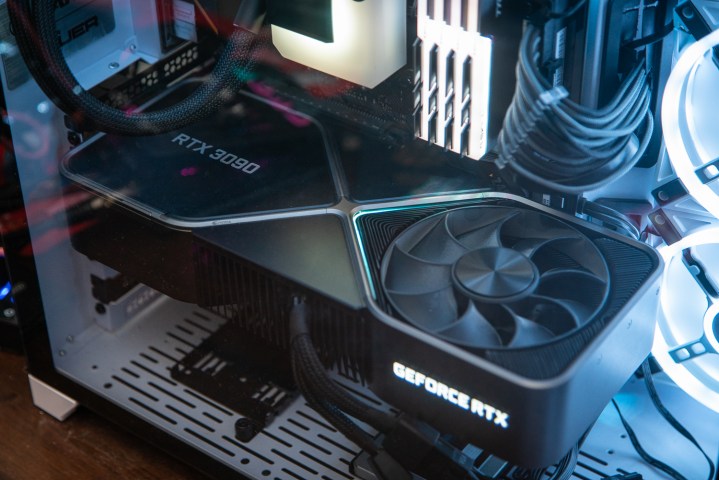
When building a PC, dipping into the last-gen is a viable strategy for saving some money while still getting something solid. This is especially true for AMD cards — in Nvidia’s case, it’s very situational, and the RTX 3090 is the best example of that. These days, it can easily be replaced by a much cheaper graphics card.
Launched in the second half of 2020, the GPU had a $1,500 recommended list price (MSRP), and things aren’t much better now. The cheapest new model I was able to find sells for $1,370. Refurbished models cost less, and there’s the second-hand market that can be even cheaper, but those GPUs are always a bit of an unknown compared to something you buy new and have a warranty on for at least a couple of years.
Still, an expensive GPU can have some merit if its performance remains unmatched, but that is certainly not the case for the RTX 3090. For starters, if you’re spending that much, the better option is saving up for an RTX 4090, which is about 90% faster. But you don’t need to spend $2,000 to get comparable performance.
All you need is a , or better yet, the .
That’s right. The RTX 4070 is just about all it takes to match the RTX 3090 — it falls within 3 to 5% of the last-gen flagship. Meanwhile, the RTX 4070 Super actually outpaces it, and it only costs $585. That sort of performance is hard to argue with, and that’s not even all because it’s impossible not to consider Nvidia’s frame generation tech in DLSS 3.
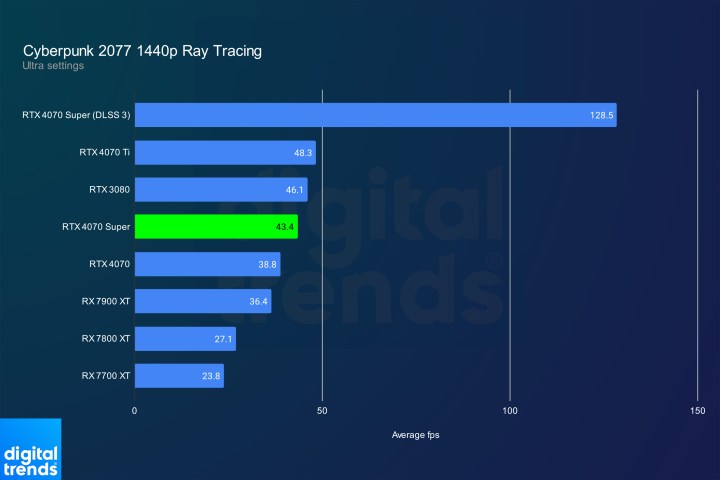
We’ve witnessed the power of DLSS 3 firsthand in our review of the RTX 4070 Super. When DLSS 3 is enabled, the card steamrolls just about every other GPU on the market in games like Cyberpunk 2077. For instance, when running at 1440p on ultra settings, the 4070 Super hits a whopping 165 fps as long as DLSS 3 is enabled; without it, it averages 87 fps, which still beats the last-gen RTX 3080.
The RTX 3090 doesn’t have a leg to stand on right now. Even if you buy it used at half its going price, you’ll still be worse off than if you bought a current-gen GPU for about the same amount of money. Without DLSS 3 and with similar rasterization performance to the RTX 4070, it’s just not a good option right now. Meanwhile, its less-capable sibling, the RTX 3080, is one of the 5 GPUs we recommend buying right now.
RTX 4080

The RTX 4080 is a tricky entry in this list and a good example of how the ebb and flow of GPU prices tends to be pretty unpredictable.
Last year, I gambled and bought the RTX 4080, which was the worst-value Nvidia GPU of the Ada generation. Months later, I’m happy with my choice and enjoying every minute of owning this graphics card, but I’m fully aware that I didn’t get the most value for money I could’ve gotten out of my purchase — not even close.
The issue with the RTX 4080 was always that it was too expensive in relation to what it had to offer. It was around 30% slower than the RTX 4090, which is pretty fair, but the pricing didn’t reflect that. Of course, since then, the RTX 4090 shot up in price and now costs between $1,800 and well over $2,000, so the value has shifted a little bit — but not quite enough in comparison to the rest of the lineup.
Nvidia must have realized that it went overkill with the $1,200 recommended price for the RTX 4080 because when the RTX 40 series refresh launched, Nvidia did something unprecedented — it cut the price of the RTX 4080 Super down to $1,000. Performance-wise, the two 4080s are essentially the same card, but the updated pricing showed that Nvidia wasn’t above saying “sorry” and trying to fix its past mistakes.
Following Nvidia’s decision, I ended up having some regrets about buying the RTX 4080 just months before instead of waiting for the RTX 4080 Super, which was meant to replace the 4080 down the line. I could’ve saved $200, after all … but for the longest time, that just wasn’t true.
The RTX 4080 Super went above MSRP upon launch and was difficult to spot at its $1,000 recommended list price. Meanwhile, the non-Super variant didn’t get much cheaper over time. This left us with two overpriced GPUs, and with the RTX 4070 Ti Super serving to plug the gap even more at just $800, the RTX 4080 Super was left in an awkward position.
Right now, the cheapest RTX 4080 Super I could find is , while the base model sells for close to $1,200. The pick is obvious between the two, and the value for the money aspect got better, too. The RTX 4080 Super, while roughly 30% slower, is also 40 to 45% cheaper than the RTX 4090 right now, and that’s in no small part thanks to the rising prices of the 4090 instead of just the price cut on the 4080S.
If you can spot either of these GPUs at $1,000 or less, go ahead. However, the pricier they get, the less worth it they become, and the competition both from Nvidia and from AMD itself is too fierce to make either the RTX 4080 or the RTX 4080 Super good options to recommend.
So, which GPU should you get?

Although you’re better off avoiding some of Nvidia’s GPUs, there are plenty of good graphics cards up for grabs from both Nvidia and AMD. It all comes down to your budget and what you need the GPU for.
For the RTX 4060 Ti, your best bets are either the if you’re okay with the performance cut or the from AMD. Above that, you can go up to an RX 7800 XT or an RTX 4070 Super. All of these outperform the RTX 4060 Ti.
In the case of the RTX 3090, if you find a great deal on it on the second-hand market and you don’t care about DLSS 3, you can still pick it up (at the risk of it being a short-term purchase, depending on how run-down the GPU is). Otherwise, take your pick from among the , , the RX 7900 GRe (which is one of the 5 GPUs we’d recommend instead of the RTX 4070 right now), or the , all of which are the same or faster at 1440p.
The RTX 4080 and the 4080 Super are perhaps the most challenging to find direct replacements for in Nvidia’s product line. Your only option is to spend less and get better value for your money with the discounted (non-Super) or to spend more and get the RTX 4090.
Alternatively, AMD is still right there. The is faster in rasterization, and while Nvidia retains the upper hand thanks to DLSS 3 and superior ray tracing, this is an excellent GPU made for 4K gaming and it sells for $930 right now.
With that said, remember that there’s no hard rule for which GPU is a great buy and which GPU is horrible. Even mediocre GPUs can become decent when they’re on sale, and even great GPUs can become an instant skip if they’re too expensive. It’s hardly ever straightforward, which is why it’s more important than ever to do some research before building a PC.




